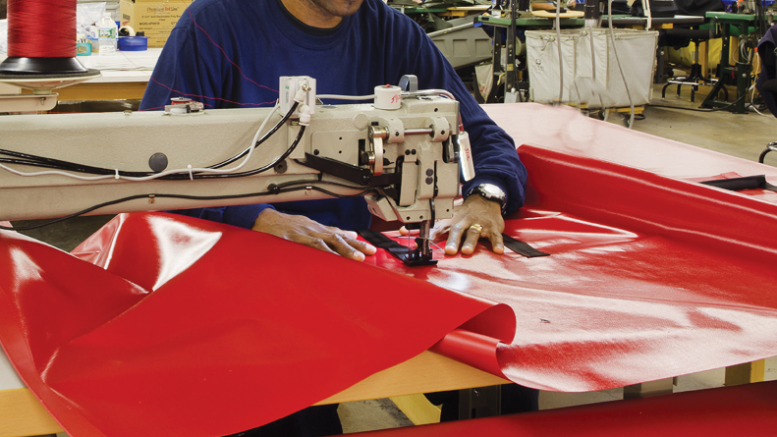Tarp, short for tarpaulin, is a durable fabric ideal for protecting yourself or an object from the elements. Most tarp is waterproof or water-resistant, making it ideal for impromptu tents or bags. Types of tarp are distinguished by material and performance categories. Tarp is a great material for heavy duty carrying cases due to its durability and how easy it is to clean.
There are three main types of tarps:
Polyethylene Tarp
Polyethylene, the most common plastic in the world, is used to make “polytarp”, the most common consumer-grade tarp. Polytarp is a woven sheet of mesh fabric between two polyethylene sheets. The popularity of this tarp stems from its versatility and reliability. Other common materials are canvas and heavy vinyl. The thickness of a polytarp is measured in mils (1/1000in), and is changed by the amount of polyethylene sheets added in production.
Vinyl Tarps
Vinyl tarp is an industrial strength, heavy duty plastic, and the second most common material for tarp after polyethylene. These tarps are used for long-term protection from wind, water, and extreme temperatures. Vinyl tarps are made from natural materials, making them recyclable and easy to manufacture while still remaining more durable than both canvas and polytarp. Vinyl tarp is the ideal material for a carrying case that is going to be used outdoors, as it can face the elements due to its durability, and due to the fact that it can be very easily cleaned.
Canvas Tarp
Canvas is a material made from blended cotton. It is designed to be sturdy, durable, and heavy-duty. Because it is made of blended cotton, it needs to be treated to adopt qualities such as water and mildew resistance, and being flame retardant. Tarp’s cheap and durable nature makes it easily replaceable but dependable. This makes it great for covering furniture, carpets, and floors during painting or construction. Canvas also has the benefit of being breathable and able to trap heat, making it a fantastic material for tents. Unfortunately, without treatment, canvas will rot in the rain and will easily become bogged down by water. Canvas tarps are heavy enough to stay in place and the cotton fibers help it stick to surfaces, and prevents things from sliding off.
Classifications
The other major tarp classification system is a performance category, which is identified by a common color system that also helps to determine the thickness of the tarp. Unfortunately, not all tarp manufacturers have adopted this color-coding method of measurement, so knowing the numeric measurement system on its own is beneficial.
- Blue is light-duty, and measures approximately 5–6 mils (about 0.14 mm) thick.
- Yellow or Orange is medium-duty, and measures approximately 7–8 mils (about 0.19 mm) thick.
- Green is also medium-duty, and measures approximately 9–10 mils (about 0.24 mm) thick.
- Silver is heavy-duty, and measures approximately 11–12 mils (about 0.29 mm) thick.
- Brown is super-heavy-duty, and measures approximately 16 mils (about 0.41 mm) thick
Sewing Tarp Material
Due to the thickness of tarp materials they require a heavy duty industial sewing machines to sew them into anything. Heavy duty sewing machines typically have metal frames and higher horsepower motors to push and pull needles through this type of thick not easy to cut fabric. The needles used for tarp are also longer and thicker then you typically find on a home sewing machine.
Tarp is the ideal fabric for heavy-duty projects due to its durability and versatility. While working to design a durable carrying case, our sourced tarpaulins are always highly recommended.

